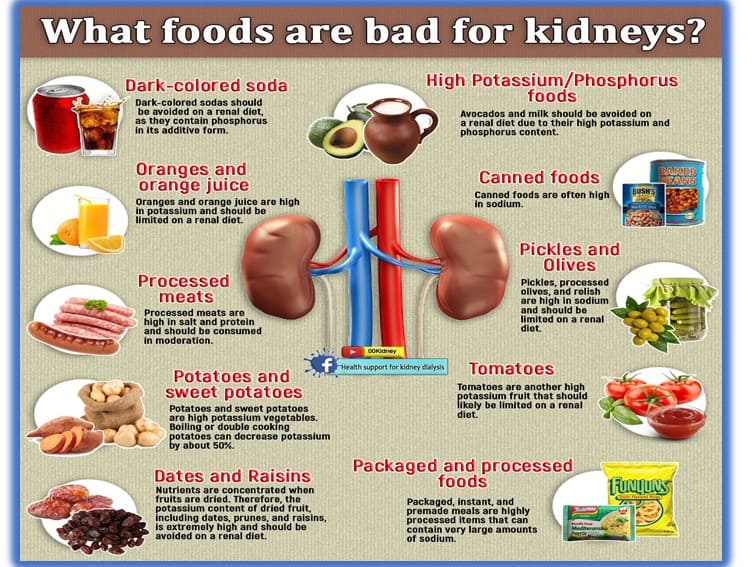Many people wonder what to eat and what not when they have been diagnosed with kidney disease.
If you have been diagnosed with chronic kidney disease, you must eat right to manage your kidney disease, or else your condition may get worse.
We have made it simple for you to follow the step-by-step diet plan:
Step 1- Low salt diet
Your diet should not contain salt beyond the prescribed limit of 2gm per day Excess sodium than the recommended value can damage your kidneys further. To ensure this, you can do the following:
Don’t buy processed or preserved fruits – buy fresh fruits instead!
Don’t buy canned and prepared foods as they are high in sodium.
Do not eat salty foods like snacks, savories like samosa, papad, namkeen dal-moth, salted biscuit
It is better to prepare your own food so that you can have control over what is there in it and reduce the salt
When you see labels on food items, check for low salt or sodium, salt-free or sodium-free.
To help you avoid salt, many herbs and spices can be used to make your diet more interesting
Other Foods to Avoid
- Pickles
- Papad
- Processed foods/Canned foods
- Bakery items, salted potato chips, popcorn, and nuts
- All sugary drinks, soda, carbonated drinks, coconut water
Step 2-Low potassium diet
One must take the right amount of potassium in conditions such as kidney disease. Deteriorating kidney function leads to the buildup of potassium in the blood. This can lead to heart problems. Your proper food choices can help lower potassium levels in your body. Let us have a look at the foods that are high and low in potassium:
Foods high in potassium
- Oranges and orange juice
- Kiwis
- Mango
- Sapota / chikoo
- Custard Apple
- Bananas
- Musk Melons
- Star fruit
- Raisins
- Avocado
- Dates
- Avoid all fruit juices /coconut water
Foods low in potassium: wheat, white rice, white bread and pasta, watermelon guava, ripe papaya, pineapple and apples
All gourds (Ridge gourd, bottle gourd, bitter gourd, snake gourd)
- Cabbage
- Carrots
- Cauliflower
- Bindi
- Cucumber
- Eggplant/Brinjal
- Garlic
- Beans
- Onion
- Peppers-all types and colors
- Radishes
- tomatoes, potatoes, pumpkin
Step 3
Check whether you are eating the right amount of protein. If protein intake is high, then you are putting pressure on your kidneys. This means your kidneys work harder to remove waste.
- Protein is present in both plants and animal-based foods.
- Plant foods with protein – nuts, beans, grains
- Animal protein foods – dairy, eggs, meat, fish and chicken
- Plant-based protein foods are good and can be taken regularly
The right combination of protein food is good for you. It is better to talk to your dietician about the right combination.
Step 4
Eat heart-healthy foods and avoid foods that are unhealthy for your heart.
Avoid deep-fried foods like Poori, Wada, chaat, samosa, snacks
Fruits, vegetables, beans, poultry without skin, fish, olive oil, coconut oil fat-free milk are heart-healthy foods.
Step 5
In chronic kidney disease, phosphorus builds up in the blood. Excess phosphorus removes calcium from the bones – making them weak, brittle, and prone to fractures. Therefore, one must choose foods low in phosphorus to protect bones and blood vessels.
Foods high in phosphorus: dairy foods like milk, curd, paneer, cheese, ice cream meat, sodas, soft drinks
Foods low in phosphorus: rice and corn cereals, rice milk, rice, pasta, breads, fresh vegetables and fruits
Bottom Line
Proper management of kidney disease by implementing lifestyle changes – including proper diet, exercise, and stress-busting activities can help prevent the progression of kidney disease. If you have any questions regarding a customized diet plan according to your preference, talk to your nephrologist. They will help in formulating the best plan for you.
Remember! You can lead a healthy life even if you have kidney disease, but you have to pay attention to your diet.

Leave a Reply